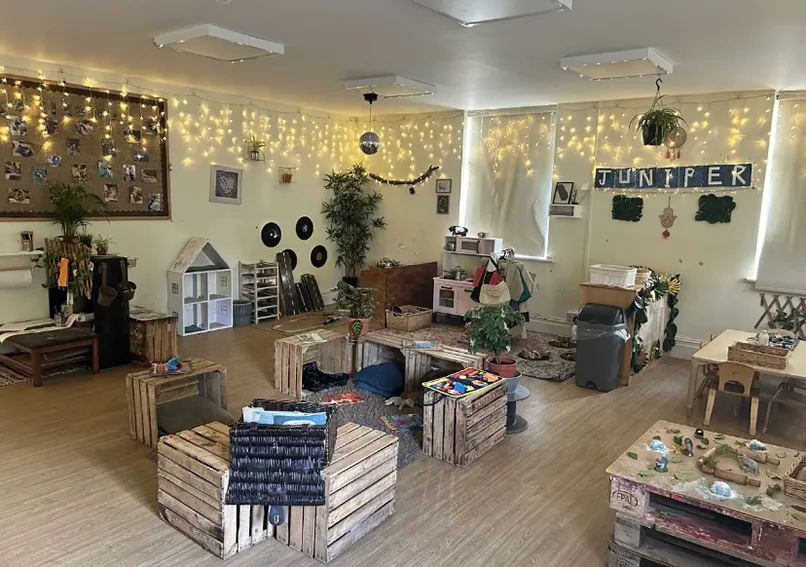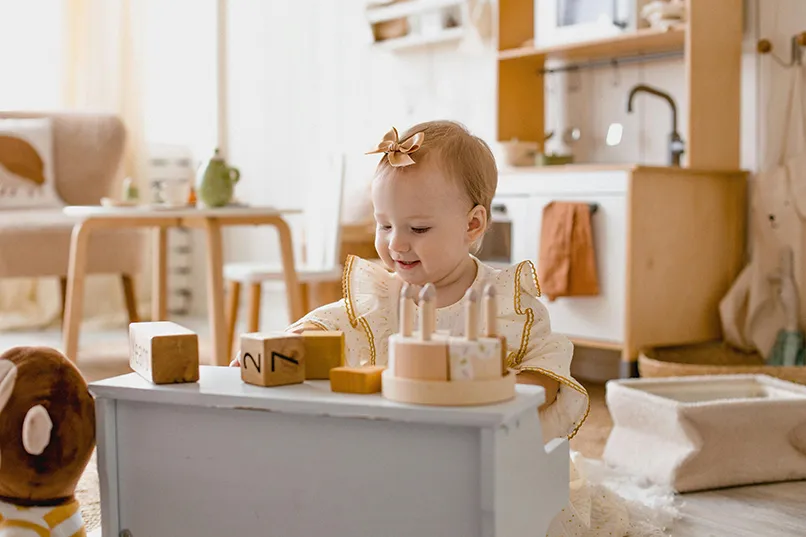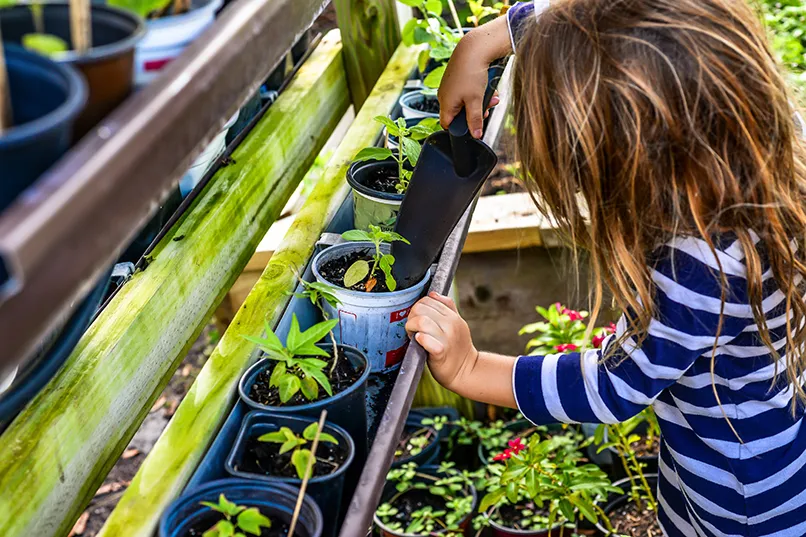About us
Hygge in the Early Years: A Cosy Approach to Learning
Hygge (pronounced hue-gah) is a Danish concept rooted in the Scandinavian way of life, nurturing warmth, calm, and joy for a balanced, mindful childhood.
When using the practice Hygge in the early years, it can provide the ideal setting for children to learn and grow within a calm and nurturing environment.
The Hygge methodology follows a child led, nature based approach to early years education, allowing children to explore their interests in a calmer, balanced and more empowered way.
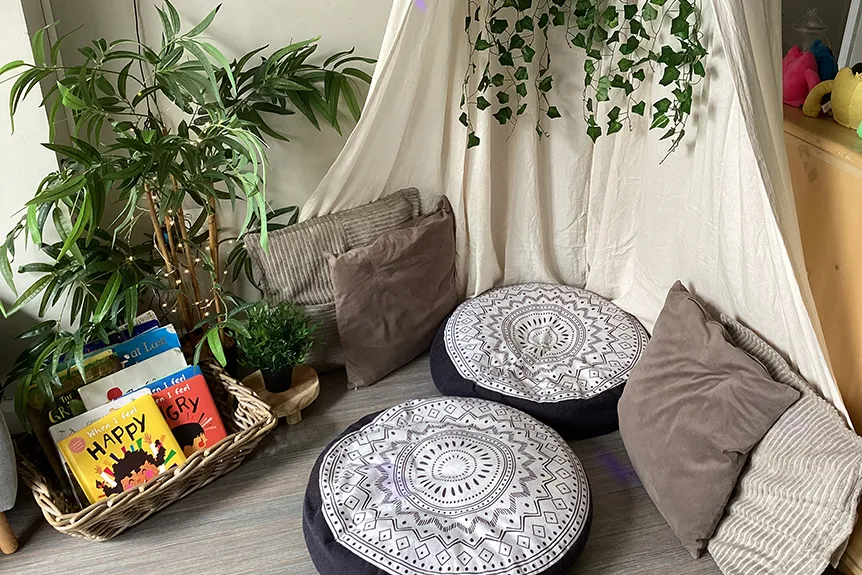
What is the Hygge Approach?
Hygge is a Danish philosophy and describes a Scandinavian style way of life which is really well suited for early years settings, because of its core philosophy that a cosy, nurturing, warm environment promotes happiness, well-being and calm.
It teaches the value of enjoying the beauty in simple pleasures and appreciating daily life.
Through this method, early years educators can help young children slow down, appreciate and be aware of their surroundings, and encourage a calmer and more mindful way of being that is very beneficial in a teaching and learning environment.
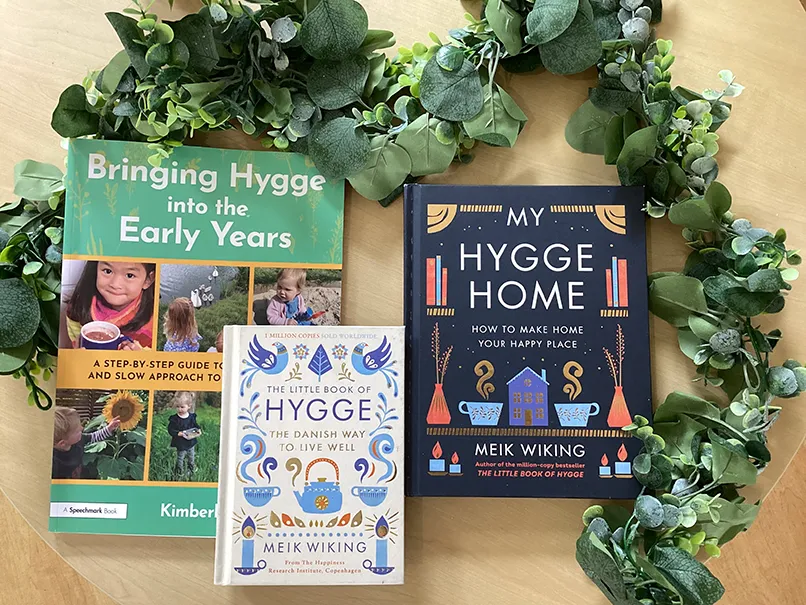
Cosy Environments
Hygge in early years settings includes the use of soft furnishings, natural materials, soft lighting and minimal clutter to create a cosy, warm environment. This provides the optimal learning environment for very young children to build their cognitive, emotional and physical development.
Mindful Learning
Focusing on each child’s current interests, the Hygge principle enables each child to spend quality, focused and productive time with their nursery key person, friends and family, building their self-confidence through play in a stress-free, happy and calm atmosphere.
Nature Connection
Connecting with wildlife and spending time outdoors is a big part of the Hygge experience.
The quality improvement team within Hygge nurseries regularly conduct a wild nature play audit to ensure their outdoor spaces are providing the best outdoor learning experience within their setting.
Nurseries can also work with their local authority to gain access to nature reserves to provide a more in depth outdoor experience for their children.
Strong Relationships
Hygge in the early years can foster deep connections and strong relationships for children, whether that’s with peers, early educators and parents.
This methodology ensures that everyone has respect for one another by spending quality time with friends, family and their nursery practitioner.
By making each day fun and enjoyable, children learn through peaceful play with each other without being overly competitive.
The Hygge Learning Principles
To use Hygge in the early years, a nursery or preschool must follow a set framework of key principles. Kimberley Lawson, an early years teacher, leader and trainer who specialises in the Hygge approach, guest lectured at Trinity and Leeds universities to showcase the principles:
Sensory Learning
Hygge in the early years environments provide the perfect settings to develop children’s senses. Sensory development is key for early years children so they can explore different materials to develop their understanding of the world.
Rhythm and Routine
Routines can help teach children the foundations of time management and organisational skills, helping them prepare for later on in life such as school.
By creating structure, nurseries can help enhance learning by creating times throughout the day to focus on cognitive, physical, emotional and social activities.
This can be demonstrated through PE time, mindful mealtimes, expression painting and so on, supporting a holistic approach to early years education.
The Outdoors as a Classroom
Not only do outdoor activities encourage physical development through active play, but lessons outdoors foster creativity and imagination as children explore nature and engage in free play. This form of play stimulates curiosity, builds confidence and facilitates the foundations of problem-solving skills.
Using the outdoors as a classroom can strengthen social interactions with both other children and nursery practitioners, as everyone works together to complete the activities.
Spending more time out in nature teaches children the importance of our natural world, ecosystems and provides the understanding they need to respect and protect the environment, now and later on in life.
If nurseries don’t have a lot of access to outdoor space within their setting, nursery practitioners can work with their local authority to gain regular access to public outdoor space for their lessons.
Our Head Start Day Nursery & Preschool in Milton Keynes combines Forest School and the Hygge approach to provide a more holistic form of outdoor learning. Activities such as crunching leaves in the autumn teaches children about different textures and the changing of the seasons, focusing on the present moment and the joy in that.
Community and Belonging
The Hygge in the early years emphasises the idea of shared experiences, which can be demonstrated group storytelling, teamwork activities, and sharing meals together.
These activities help to cultivate strong relationships between peers, teachers, and families alike to create a sense of belonging inside and outside of nursery.
Shared experiences create long-lasting bonds among children, and encourages mindfulness and respect amongst one another.
Mealtimes within Hygge based nurseries incorporate a family-style meal where children can share food, swap stories about their day and laugh together, helping to promote emotional connections and inclusivity amongst everyone.

Inside a Hygge Nursery: See Hygge in Action
Our Kiddi Caru Day Nursery & Preschool in Rushden is known for their Hygge in the early years approach, and have developed a holistic and mindful educational experience for their children. They create a warm and welcoming environment by using soft furnishings, natural materials, low lighting, minimal clutter and establishing cosy corners within their setting.
The nursery priorities moments of stillness throughout their day in a way suitable for very young children, such as a gratitude circles or meditation to calming music, which brings children to the present moment to help them focus and finding well-being within their surroundings.
During these activities children love to discuss and reflect simple pleasures in that bring them joy. For example, a cuddle, watching the birds out of the window, playing in the strip of sunlight as it pours through the window.
Their Hygge environment doesn’t just benefit the children, but the staff as well. The cosy rooms and peaceful atmosphere enhances staff well-being and happiness while they are at work, supporting a deeper level care for each and every child.
It has strengthened the bonds between team members and the nursery’s families, helping the staff have a positive outlook in every situation.
